The traditional fishing art brings a unique vibrancy to the beaches where it is practiced in the Aveiro Region: Areão, Torreira, and Vagueira.
The Aveiro Region is renowned for the tradition of “Xávega” Art. This practice plays a crucial role in affirming and valorizing the region’s cultural heritage.
It is a legacy passed down by the ancestors to the local fishing community and the people of the land, ensuring that this art form remains alive and continues to be an integral part of the living heritage of the Aveiro Region.
what is “Xávega” Art?
From livelihood to tradition
The origins of “Xávega” art in the lagoon region of Aveiro can be traced back to the mid-18th century, establishing the first fishing company in 1751.
“Xávega” art derived from the Arabic term “xábaka,” is a traditional artisanal drag-net fishing method. It involves casting a net into the sea from a boat while leaving one end of the rope, called the “reçoeiro,” on land. After deploying the net, the ship returns to the beach, bringing the other end of the rope known as the “mão-de-Barca.” The hauling process begins simultaneously on both ropes, pulling the net towards the shore while keeping the mouth of the net open using buoys. The “xávega” concludes with the arrival on the beach and the net’s opening to reveal the catch.
“Xávega” art is defined by its distinctive fishing gear – the nets and boats – rather than the method of traction used during the hauling process. Initially, hauling was done manually by fishermen, later aided by animal traction using multiple teams of oxen, and nowadays, it is commonly performed with the assistance of tractors.
A day of fishing consists of a variable number of “lanços” (fishing trips) that can range from several to just one, depending on various factors such as sea conditions, the capacity of the fishing crew, the quantity, and quality of the catch, as well as the demand and sale of the fish.
Rites and customs
A Time-Honored Tradition Passed Down Through Generations
Experience the Timeless fishing art of “Xávega” along the Areão, Vagueira, and Torreira Beaches.
Immerse yourself in the captivating tradition of “Xávega Art” as you witness the skilled fishermen of the Aveiro region carry on this ancient practice along the shores of Areão, Vagueira, and Torreira. Their wooden boats bravely face the crashing waves, creating a mesmerizing sight that has become a significant attraction for tourists in the area.
The art of “Xávega” is carried out by groups of fishermen known as “Companhas” dedicated to a specific boat. Each “Companha” is divided into two groups: the “men of the sea” and the “men of the land.” Currently, four “Companhas” are practicing this art in the Aveiro region, with two located in Murtosa and two in Vagos.
This traditional fishing activity is seasonal, mainly from March to October, when the sea conditions are most favorable. During the off-season, the fishermen prepare the nets and maintain their boats while engaging in secondary activities such as agriculture or construction. The intricate knowledge and skills required for crafting and handling the nets have been passed down from generation to generation, with fathers passing on their expertise to their sons and learning from experienced net makers in the region.
Curiosities on the Xavega Art

The “companhas”
Due to its complexity, not many professionals possess this know-how. Currently, in Murtosa, you can find Marco Silva from “Companha Maria de Fátima” and Bruno Murta from “Companha Olá S. Paio.”
In Vagos, there are João Esteves from “Companha Valdemar,” Carlos Alberto Silva, and João Carlos Silva (father and son) from “Companha João da Murtosa.”
In Albergaria-a-Velha, Almerinda Marques is an expert in the nets’ reparation.
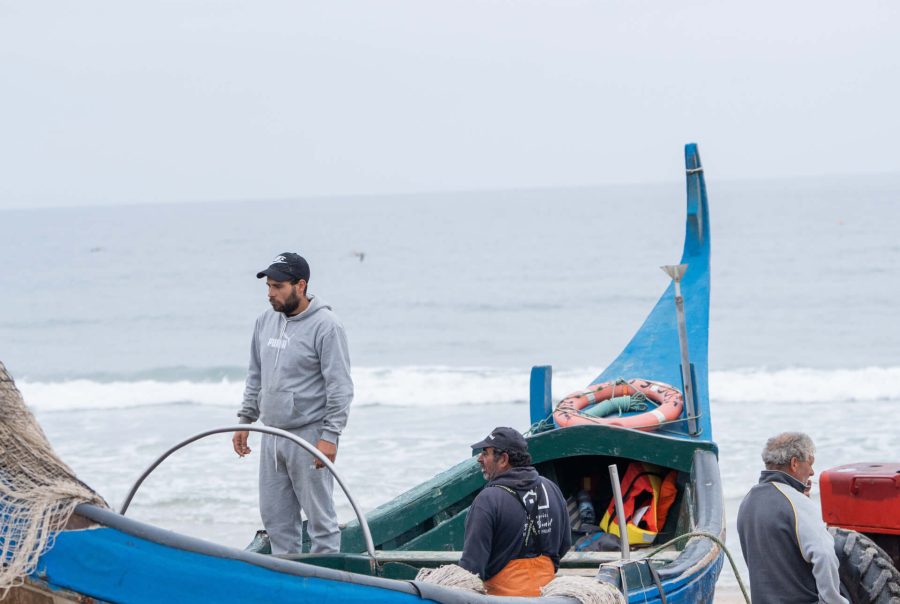
The boats
The boats used in Xávega Art, known as “barco do mar” (sea boat), have a flat and arched bottom shape resembling a half-moon, with a highly raised bow to easily cross the surf zone. Today, there are still a few active Master Shipbuilders. In Estarreja, we have the masters Felisberto Amador, António Esteves, and Arménio Almeida. In Murtosa, we can find the masters Marco Silva and José Rito.
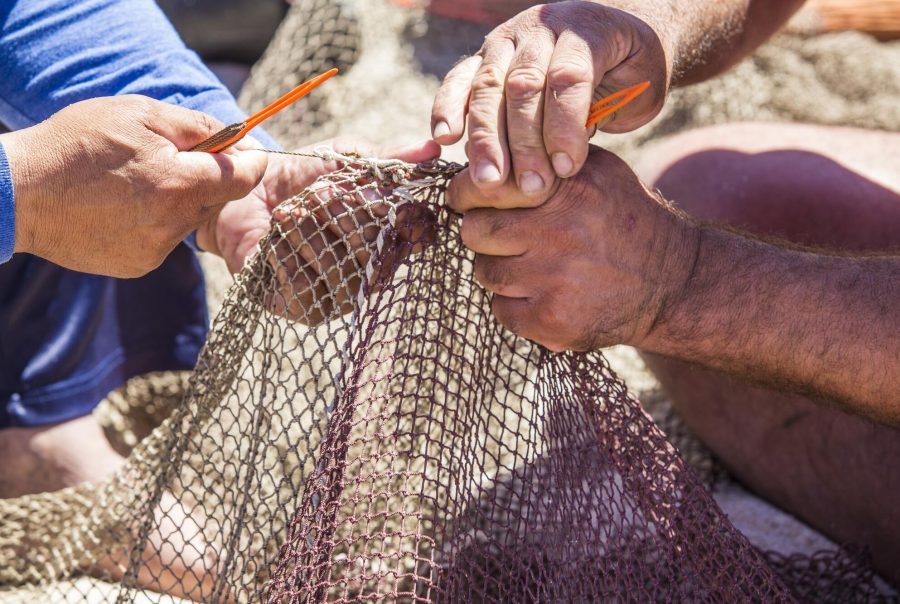
The nets
The nets used in Xávega Art consist of two sleeves and a bag. They have a maximum bag length of 50 meters, wing lengths of 380 meters, and hauling ropes reaching up to 3000 meters. The nets used in the activity today are very similar to those used in the past, with the main difference being their dimensions and materials. Linen has been replaced by nylon, polypropylene, and polyethylene.
The companhas e their arrais
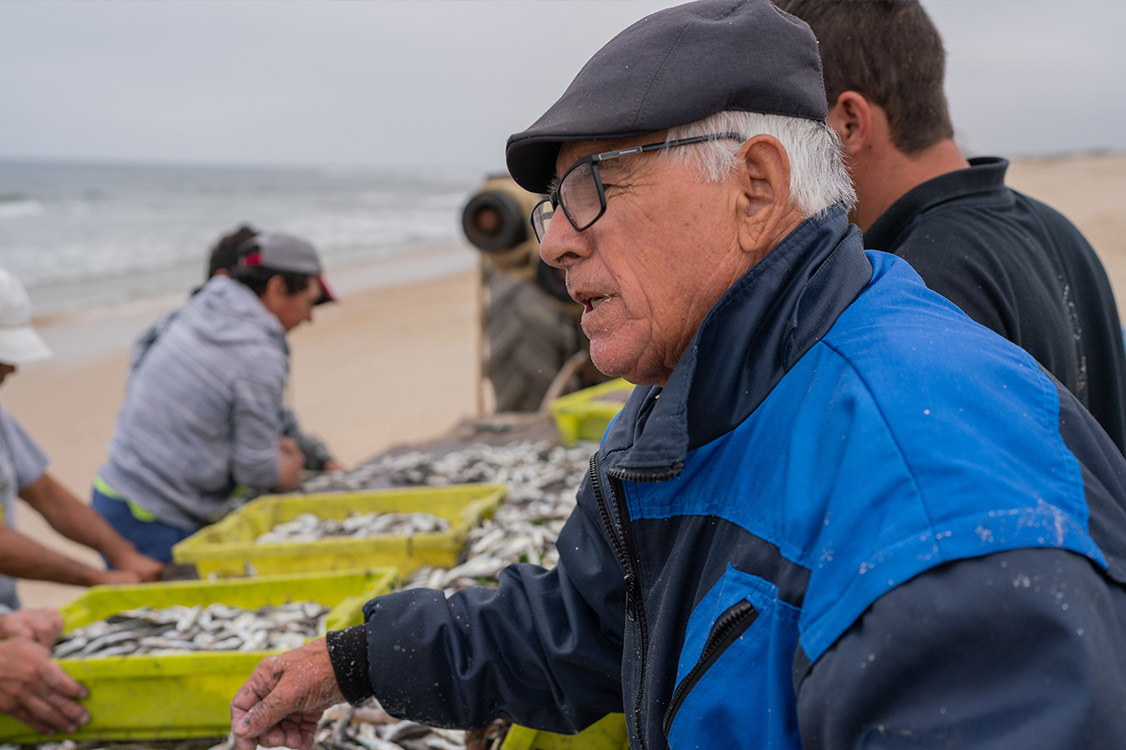
João Esteves e Francisco Esteves
Companha Valdemar
Praia do Areão, Vagos, Aveiro
João Esteves embarked on “Xávega” Art due to family tradition. He dedicated several years to cod fishing. In 1985, he decided to establish his own “Companha,” which he currently operates in partnership with his four sons. His son Francisco Esteves began helping his father at a young age and now manages the “Companha.”
The “Companha Valdemar” practices “Xávega” Art at Areão Beach in Vagos from March to September. The passion that drives this father and sons is evidence that this centuries-old practice endures thanks to their unwavering enthusiasm for the traditional fishing art as they continue to cast their nets into the sea.
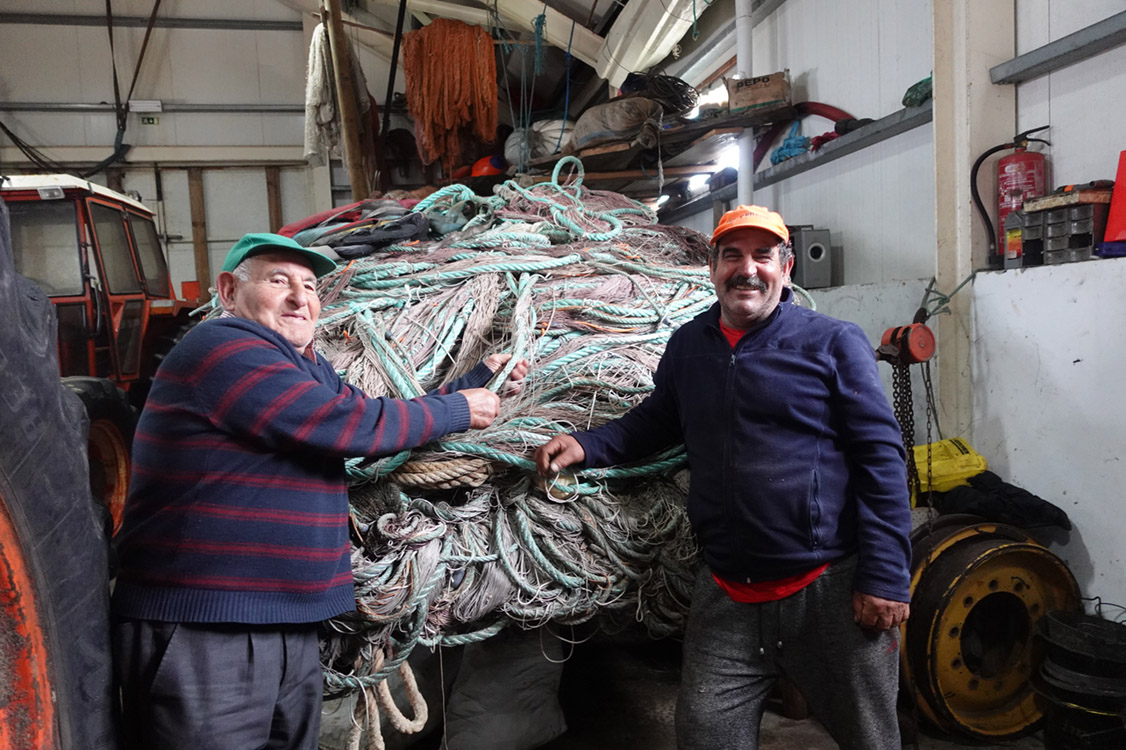
João Carlos Silva e Carlos Alberto Silva
Companha João da Murtosa
Praia da Vagueira, Vagos, Aveiro
The “Companha João da Murtosa” was established in the 1950s by João Carlos Silva. As a moliceiro (seaweed harvester) by profession, when the Ria de Aveiro was the primary source of income for families in the Aveiro Region, he later built his first “Xávega” Art boat. He dedicated himself to the art ever since. He works with his son, Carlos Alberto Silva, who shares the same passion and enthusiasm for “Xávega” Art.
The “Companha João da Murtosa” practices “Xávega” Art at Vagueira Beach in Vagos, generally from June to September, with one daily fishing trip. From October to March, the “Companha” focuses on maintaining and repairing the nets, a skill a longtime friend from the Aveiro Region passed down to them.
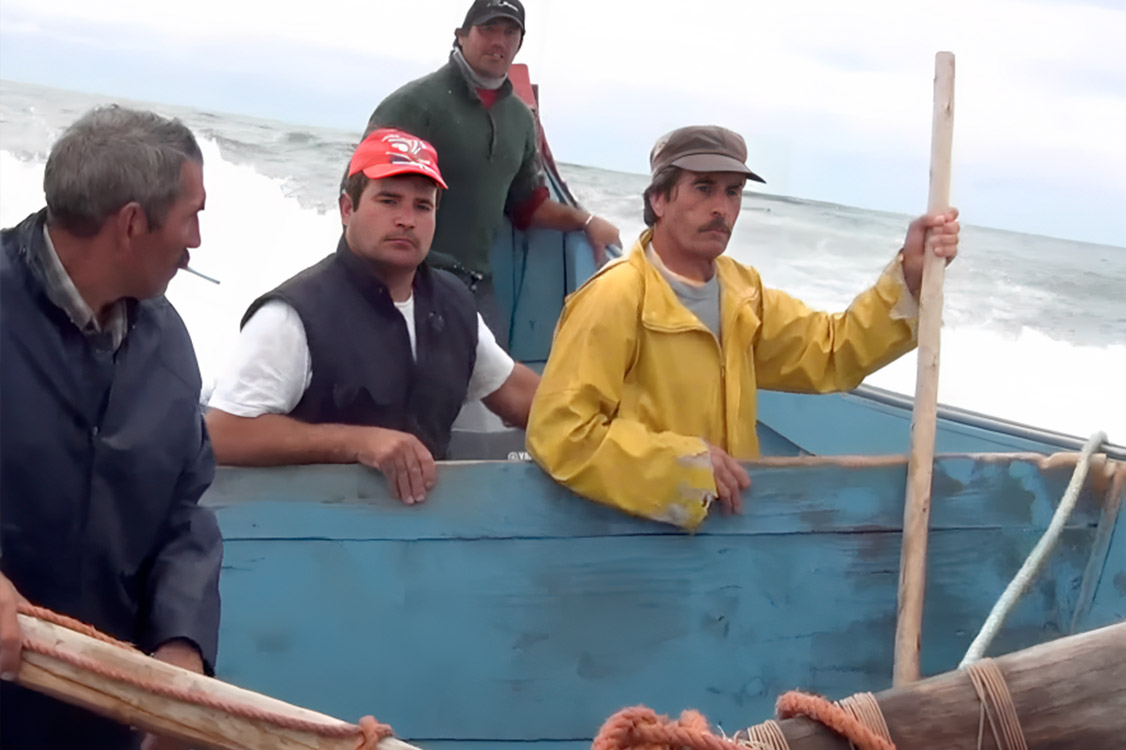
Marco Silva
Companha Maria de Fátima
Praia da Torreira, Murtosa, Aveiro
Despite being abroad for 10 years, Marco Silva has always been connected to the sea and the Ria de Aveiro as a fisherman. In 2004, two years after returning from Luxembourg, he acquired a boat. He formed the “Companha Maria de Fátima” and then dedicated himself to “Xávega” Art.
The “Companha Maria de Fátima”, which practices Arte Xávega at Torreira Beach (Murtosa), employs 22 people. This “Companha” practices Arte Xávega from April to October, with approximately 4 daily fishing trips. Marco makes all the nets used in the activity, aiming to preserve the knowledge and traditions that are so characteristic of the region.
Marco Silva is also a boatbuilder of traditional vessels, like Moliceiros, Xávegas, and Bateiras. He is currently the youngest professional in active naval construction in the Aveiro Region.
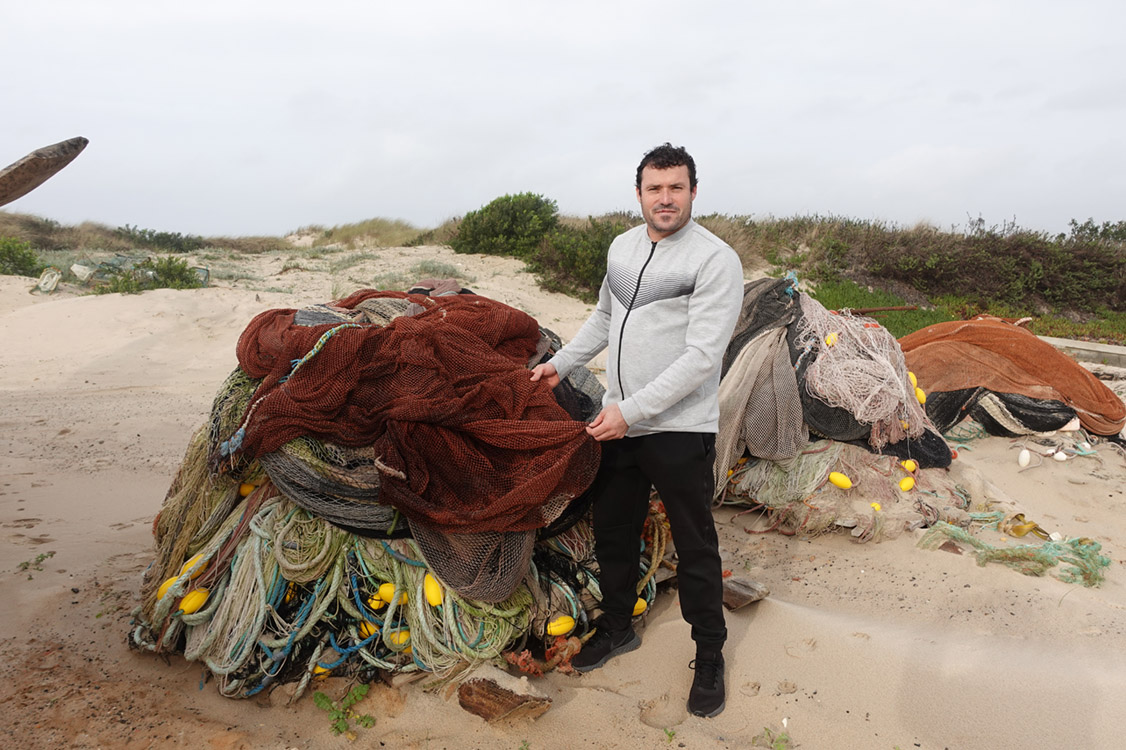
José Murta e Bruno Murta
Companha Olá Sampaio
Praia da Torreira, Murtosa, Aveiro
The “Companha Olá Sampaio” was founded in 1985 by Mr. José Murta, the father of Bruno and José Murta, who currently manage the “Companha.” Bruno Murta was born in 1979 and José Murta in 1985.
Their passion for “Xávega” Art had accompanied them since a young age when they started working in the activity with their father. Since then, they have combined “Xávega” Art with other businesses in artisanal fishing.
They practice “Xávega” Art at Torreira Beach, Murtosa, from March to September. During the remaining months, they focus on maintenance and repairs of the equipment and engage in fishing in the Ria de Aveiro.

